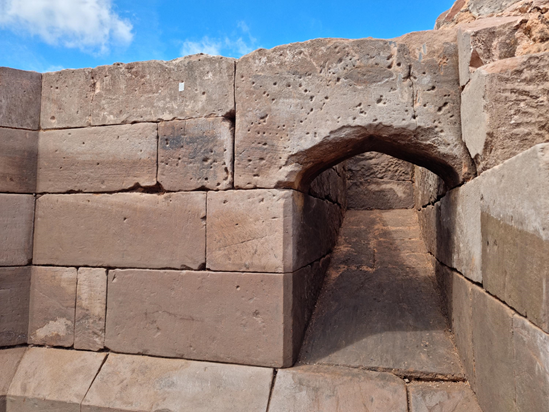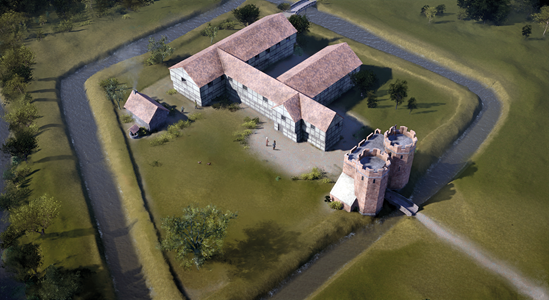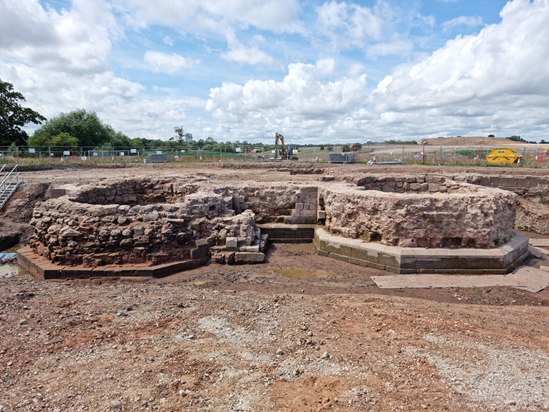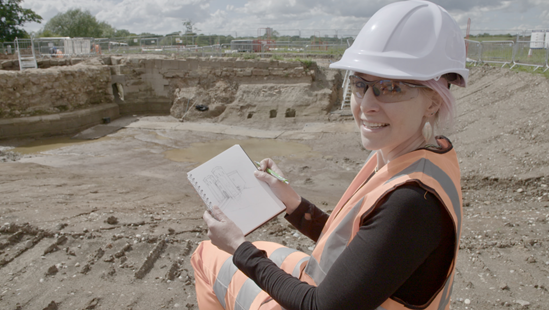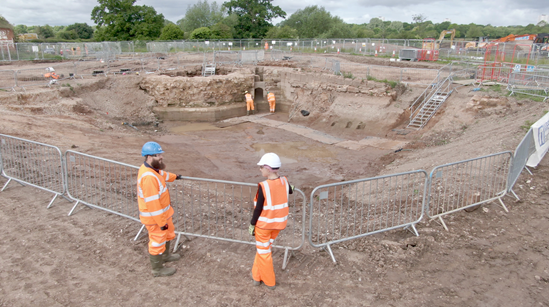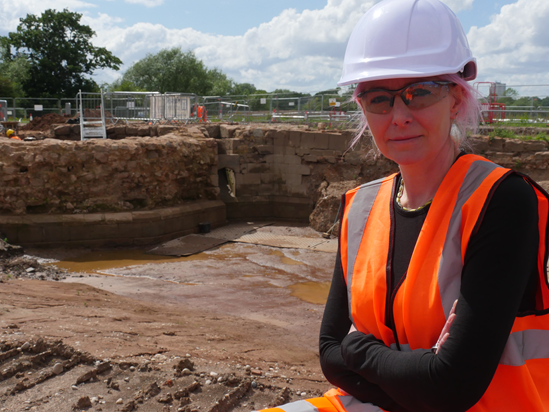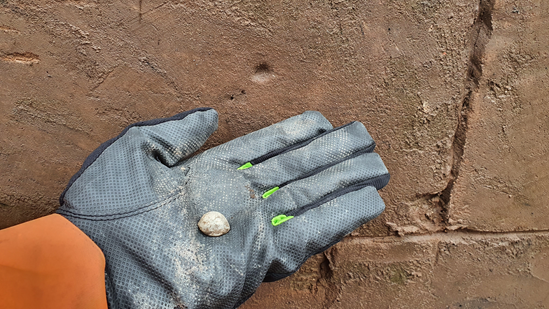HS2 archaeologists excavating the site of Coleshill Manor in Warwickshire have uncovered evidence of what could be one of the first battles of the English Civil War in the 17th century.
The team from Wessex Archaeology were astonished at the striking signs that the heavily fortified gatehouse found on site had come under fire, with around 200 impact marks from pistol shots and musket balls on its outer side. Over 40 musket balls were removed from the nearby soil, which would have been a moat around the manor’s gatehouse, further suggesting that a skirmish had taken place. The discovery will feature in Series 10 of BBC’s Digging for Britain.
Professor Alice Roberts, historian and presenter of Digging for Britain, said:
“The discovery of the medieval gatehouse at Coleshill was quite unexpected - and I was amazed at just how much of the monumental stone building, with its two great octagonal towers, had survived below the ground. The front of the gatehouse was pockmarked and had clearly been shot at with muskets - perhaps for target practice - but there’s also an intriguing possibility that we’re looking at evidence of the earliest skirmish of the Civil War."
The English Civil War began in August 1642. The conflict was between the Royalists who were loyal to King Charles I, and Parliamentarians, known as the Roundheads. The first recorded battle of the Civil War, the Battle of Curdworth Bridge, took place in 1642, and was only a short distance from Coleshill Manor.
The Manor was in the hands of Royalist Simon Digby as the Civil War approached, after the estate was transferred into his name following the execution of its previous owner, Simon De Montford, for Treason.
Coleshill Manor, next to a bridge over the River Cole, would have been a strategic position that the Roundheads would have wanted to control. Experts believe that the Roundheads would have passed close to the Manor on their way to battle. It is entirely plausible that a skirmish took place on the way to Curdworth Bridge, especially given the Manor’s strong Royalist connection. Historical records of the Civil War are confined to famous major battles, so details of the exact events will never be known, but these marks exposed as part of HS2’s archaeology programme provide a rare glimpse into the impact of war on the lives of those not recorded in the history books.
The team from Wessex Archaeology have now completed the excavation of the foundations of the gatehouse at Coleshill Manor.
Stuart Pierson, Archaeologist, Wessex Archaeology, said:
“As the excavations at Coleshill for HS2 wrap up, it’s timely to reflect on the extraordinary archaeology we have discovered and recorded.
“Although we knew there was a manor house at the site, we had no idea that we would uncover such rich and revealing archaeological evidence. From one of the most impressive Elizabethan ornamental gardens in the country to the remains of what could be the first skirmish of the Civil War, these findings - not recorded in historical records - would have been lost to time, had it not been for the expertise and hard work of the team.”
The extent of the gatehouse was unknown before work began, as the only documentation of its existence was a passing mention in 17th century records. Not only was the gatehouse a defensive feature of the Manor, it also highlighted the importance of its owner. The gatehouse to the Manor likely opened to a drawbridge over the moat. It featured a large stone building to the back measuring about 10m by 10m with two heavily fortified angular towers, constructed of fine ashlar masonry and expertly-carved stone blocks.
It is thought that it was constructed in the 13th or 14th centuries and went out of use in the 1650s before being demolished in the late 17th century to make way for a newer, more modern manor, courtyard and gardens.
HS2 excavations also revealed impressive 16th century ornamental gardens comparable to those of Kenilworth Castle and Hampton Court Palace. During preliminary investigations, the existence of the gardens and Manor house were picked up by aerial photography and from that HS2’s archaeological team began preparing for the specialist excavations.
Speaking about the discovery, Helen Wass, HS2’s Head of Heritage, said:
“HS2’s extensive archaeology programme, which has involved hundreds of people, has provided unparalleled insights into the history of Britain and the discoveries at Coleshill Manor are a major part of that. Whilst we may never have all the details of the battle that took place in Coleshill, our investigations help historians weave together the complex pieces of information to increase our understanding of events.
“Although fieldwork between London and the West Midlands is largely complete, detailed post excavation study will begin shortly and we will continue to share the incredible pieces of our past discovered during this once in a lifetime dig.”
The incredible discovery features on Episode 3 of Series 10 of BBC’s Digging for Britain which airs on BBC Two at 8pm on Sunday 22nd January 2023. All episodes are also available on BBC iPlayer.

